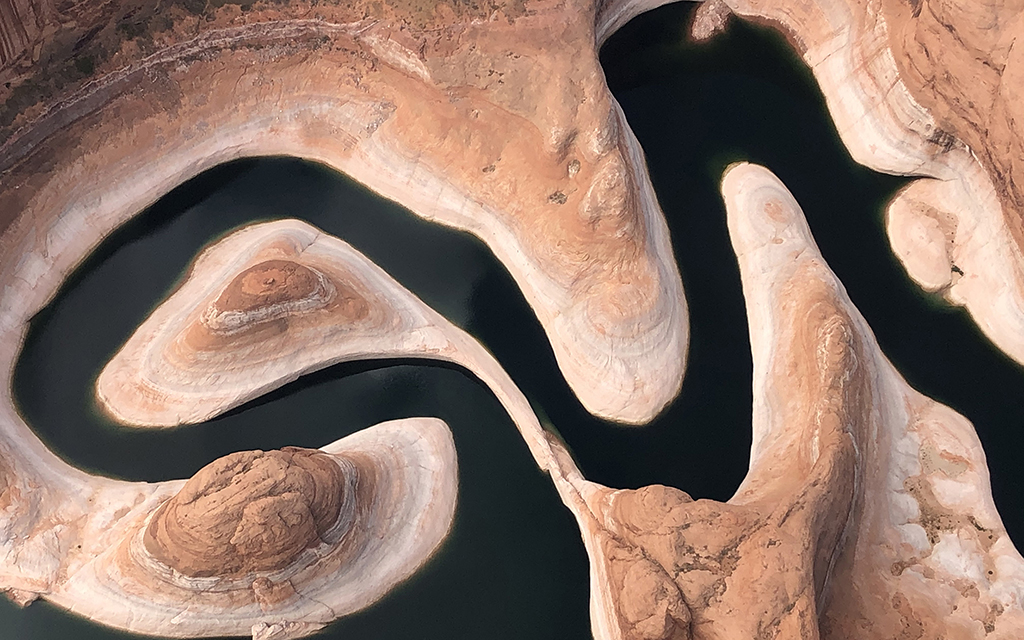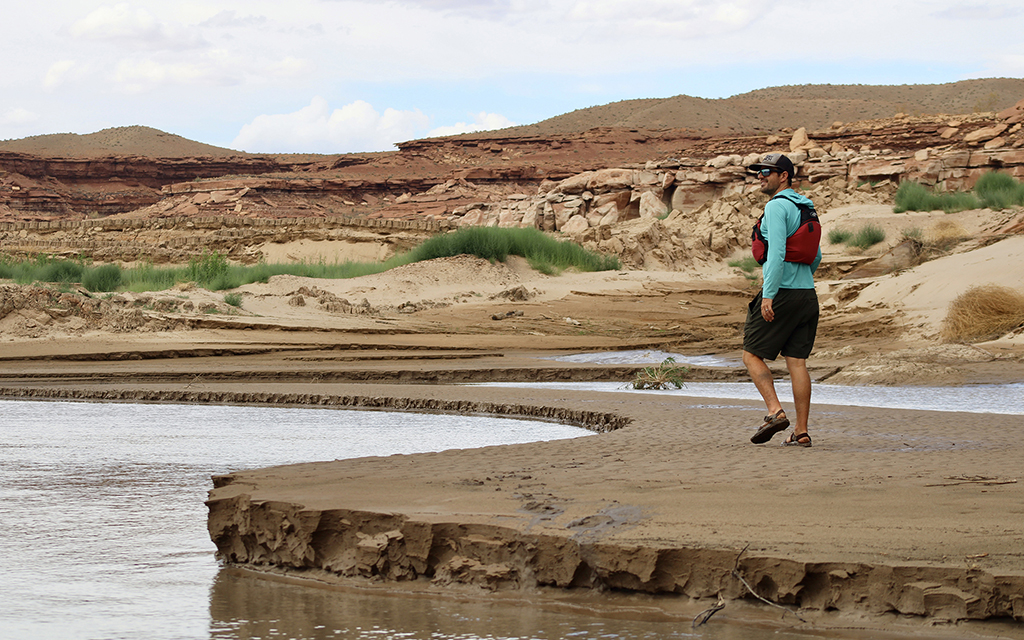
Reflection Canyon, upstream of Lake Powell, in June 2021 shows the “bathtub ring” of rock exposed as lake levels fall to historic lows. A plan by lower Colorado River basin states would save 3 million acre-feet of water by 2026, but experts say a longer-term plan is needed to address the rising demand and ongoing drought that continue to drain the river. (Photo courtesy National Park Service)
WASHINGTON – Arizona, California and Nevada unveiled a plan Monday to save 3 million acre-feet of Colorado River water between now and 2026, a stopgap measure to buy time while authorities figure out a long-term plan for the river.
The plan, which has been in the works for years, came just days before the May 31 deadline, when the Biden administration had threatened to impose cuts from the federal level if the states could not reach an agreement of their own.
Under the proposal, which still needs to be approved by the Bureau of Reclamation, California would agree a reduction of about 1.6 million acre-feet, according to published reports. It is unclear how the remaining reductions would break down, but it would likely to be up to Arizona to make up the balance, said Sarah Porter, director of the Kyl Center for Water Policy at Arizona State University.
“There’s only so much Southern Nevada can do, and it’s just the three states,” Porter said.
Porter called the proposal “a step in the right direction,” but others said that it only buys time as officials work out a major overhaul of how water from the Colorado River is allocated.
Rep. Greg Stanton, D-Phoenix, said in a tweet that while the deal presents a “workable path forward,” it “does not resolve questions over the long term … it uses drought dollars from the Inflation Reduction Act to quite literally buy time.”
But Rep. Ruben Gallego, D-Phoenix, praised “our state’s water managers and negotiators for finalizing a deal that protects the Colorado River system.”
“Thanks to their efforts, Arizona will have a more stable water system and a chance to rebuild our reservoirs for the coming years,” Gallego said in a statement posted to Twitter.
The Colorado provides water to 40 million people, and electricity to millions, but its flow has steadily declined over the last two decades amid what scientists say is the worst drought in the region in 1,200 years.
Officials had sounded the alarm as recently as February, when water levels in Lake Powell reached historic lows. This fueled speculation that the lake – one of two major reservoirs on the river, along with Lake Mead – would drop to “deadpool,” the level at which water could no longer flow through Glen Canyon Dam, which generates hydroelectric power.
“Unfortunately, deadpool at Lake Powell is a climate inevitability,” said Taylor McKinnon in an emailed statement from the Center for Biological Diversity.
“It’s long past time for federal agencies to plan for water allocations and endangered fish recovery in the context of that inevitability,” McKinnon’s statement said. “The days of using massive amounts of Colorado River water for growing cow food, like alfalfa, must end.”
The river got a reprieve this winter from unusually heavy snowfall in Colorado and heavy rains in California.
“This year because of the all the good snowpack, both Lake Powell and Lake Mead are actually going to go up,” Porter said.
However, the agreement only extends through 2026, when a long-term strategy, currently being negotiated, will be introduced.
When asked how the latest proposed cuts would affect Arizonans, Porter said she thinks “we’re still not at the place where we’re looking at people really feeling this,” explaining that Arizona has already has already taken significant cuts to its water supply this year.
“This year Arizona took an uncompensated cut of 592,000 acre-feet and then added an additional couple-hundred thousand acre-feet of compensated conservation,” she said. “So, Arizona is already getting close to a million acre-feet this year without this additional agreement.”
The cuts have come from farmers in Central Arizona up to now, Porter said, but she thinks some cities have got capacity to make cuts to their water supply and still “meet demand at tap.”
She stressed that the cuts are voluntary, however, and will involve agreements between the Bureau of Reclamation and various entities with water rights, like cities and tribes.
McKinnon said the plan does not go far enough.
“This stop-gap solution doesn’t address the long-term problems of overallocation and climate-driven declines in the river’s flow,” his statement said.
Porter said hydrology is a guessing game, and climate change and over-allocation of the river’s water is making that game ever more difficult.
“You’re always trying to guess at future hydrology, and so that’s what this is really about,” she said.


